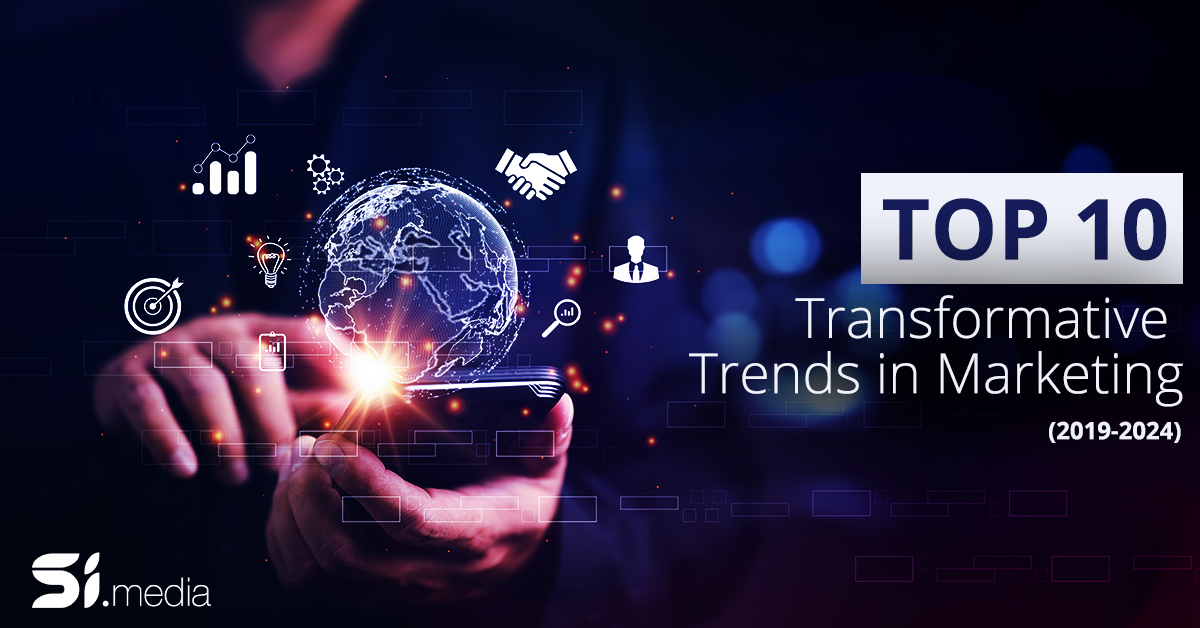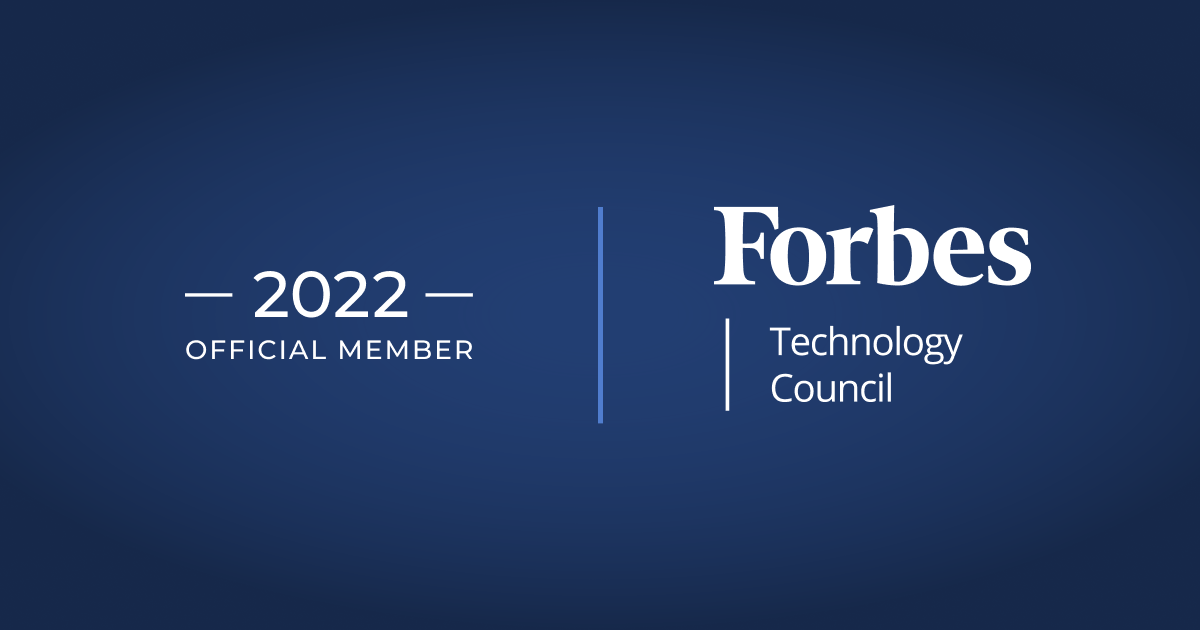In the dynamic world of digital marketing, change is the only constant. The past five years have been a whirlwind of transformation, with emerging technologies, evolving consumer expectations, and innovative marketing strategies rewriting the rules of engagement. Our comprehensive guide, ‘Decoding Digital Evolution,’ delves into the top 10 transformative trends from 2019 to 2024, offering insights and strategies to help you navigate the ever-evolving digital marketing landscape. Whether you’re a seasoned marketer or a business owner adapting to digital changes, this guide is your roadmap to understanding and leveraging the latest trends in digital marketing.
1. The Rise of Artificial Intelligence and Machine Learning in Digital Marketing
In the realm of digital marketing, the surge of Artificial Intelligence (AI) and Machine Learning (ML) isn’t just a fleeting trend; it’s a paradigm shift. The past five years have witnessed these technologies transition from buzzwords to essential tools in crafting personalized customer experiences. But what does this really mean for us in the digital marketing world?
Firstly, let’s talk about data. AI and ML thrive on data—the lifeblood of digital marketing. These technologies have enabled us to move beyond basic demographic targeting. Now, we’re talking about predictive analytics, where AI algorithms anticipate customer needs and behaviors, creating a marketing strategy that’s not just reactive, but proactive. The beauty of this? It’s all happening in real time.
Take chatbots, for example. Once a novelty, they’re now indispensable for customer service and engagement. These AI-driven assistants are not only handling queries 24/7 but are also evolving to provide more personalized interactions, thanks to natural language processing. This isn’t just efficiency; it’s about creating a more human and relatable touchpoint in the digital space.
Then there’s the realm of personalized recommendations. Platforms like Amazon and Netflix have set the bar high, using AI to analyze user preferences and viewing habits, thus offering suggestions that often hit the mark. Apply this to digital marketing, and you’ve got a powerful tool for increasing conversion rates and customer loyalty.
But let’s not forget the challenges. Integrating AI and ML into marketing strategies isn’t a walk in the park. It requires a solid data foundation, a clear understanding of your marketing goals, and, most importantly, the ability to adapt and evolve with these technologies. There’s also the ethical consideration of data usage and privacy—a balance that must be meticulously maintained.
In essence, AI and ML are revolutionizing digital marketing, offering unprecedented opportunities for personalized marketing at scale. However, as with any powerful tool, they require careful handling, clear strategy, and an ongoing commitment to learning and adaptation. For those willing to embrace these technologies, the rewards are substantial—enhanced customer engagement, improved ROI, and a significant edge in a competitive marketplace.
2. Dominance of Video Marketing: The Visual Revolution in Digital Storytelling
If there’s one thing that’s become crystal clear in the last five years, it’s that video isn’t just a piece of the digital marketing puzzle – it’s the heart of it. The explosion of video content across platforms is not just a trend; it’s a fundamental shift in how we consume information and connect with brands.
Let’s put it into perspective. The human brain processes visuals 60,000 times faster than text. In a world where attention is the new currency, video stands out as the kingpin. But it’s not just about being noticed; it’s about creating an experience. Video has this unique ability to blend storytelling with sensory engagement, making it a powerhouse for creating memorable, emotional connections with audiences.
Short-form videos, in particular, have taken the digital world by storm. Platforms like TikTok, Instagram Reels, and even YouTube Shorts are redefining the rules of engagement. These bite-sized snippets of content aren’t just easy to consume; they’re incredibly shareable and have the potential to go viral, giving brands unprecedented visibility.
But it’s not just about going viral; it’s about authenticity and relatability. Live streaming, for instance, has emerged as a powerful tool in this regard. It breaks down the barriers between brands and consumers, offering a raw, unfiltered view that audiences crave. This isn’t polished advertising; it’s real-time connection, and that’s invaluable.
Of course, with great power comes great responsibility. The challenge for us marketers is to create video content that’s not just visually appealing but also relevant and value-adding. It’s about understanding your audience, what resonates with them, and how to tell your story in a way that’s both authentic and engaging.
So, what’s the bottom line? Video marketing isn’t just a trend; it’s the future. As digital marketers, we need to embrace this visual revolution, hone our storytelling skills, and leverage the power of video to create deeper, more meaningful connections with our audiences. It’s an exciting time, and the possibilities are endless. Bring on the video era!
3. The Evolution of Media Buying on Meta and Google: Navigating the New Age of Automation
In the ever-evolving landscape of digital marketing, the transformation of media buying on behemoths like Meta and Google stands as a pivotal change in the last five years. This evolution is less about the platforms themselves and more about how they’ve redefined the art and science of placing ads.
Gone are the days when media buying was a largely manual, often guesswork-driven process. Today, we’re witnessing an era where automation and AI are not just buzzwords but the very fabric of media buying. Meta and Google have pioneered this change, leveraging machine learning algorithms to optimize ad placements, audience targeting, and bidding strategies.
What does this mean for us as digital marketers? For starters, it’s a game-changer in efficiency and effectiveness. Automated media buying takes the guesswork out of the equation. We’re talking about systems that analyze vast amounts of data to determine the optimal way to spend each advertising dollar. The result? Better targeting, better reach, and, crucially, better ROI.
But it’s not just about algorithms and automation. These platforms have also democratized media buying. Small businesses can now compete on the same playing fields as giants, thanks to the accessibility and scalability offered by Meta and Google’s automated tools. This shift has opened up new vistas of opportunity, allowing more players to enter the arena and compete effectively.
However, it’s not all smooth sailing. With automation comes the challenge of staying relevant and maintaining a human touch. The key lies in understanding that while AI can crunch numbers and predict trends, the human element of creativity and strategy is irreplaceable. Balancing automation with human insight is the new mantra for success.
Moreover, as the landscape becomes more automated, the importance of data literacy and analytical skills has never been higher. Navigating Meta and Google’s platforms now requires a deep understanding of how AI works and how to interpret the data these systems provide.
In conclusion, the shift towards automated media buying on platforms like Meta and Google is a testament to the dynamic nature of digital marketing. It challenges us to adapt, upskill, and rethink our strategies. Embracing this change is not just about keeping up; it’s about seizing the opportunity to craft more impactful, data-driven marketing campaigns that resonate in today’s digital world.
4. The Growth of Influencer Marketing: Mastering the Art of Authentic Alignment
As we navigate through the transformative landscape of digital marketing, the rise of influencer marketing stands out as a pivotal trend. Over the past five years, influencer marketing has evolved from a peripheral strategy to a central pillar in brand promotion. However, the key to harnessing its full potential lies not just in leveraging influencers but in strategically aligning them with the right brands.
For marketing firms and agencies, the challenge and opportunity lie in moving beyond mere popularity metrics. It’s not just about the number of followers; it’s about the synergy between the influencer’s persona and the brand’s identity. A misaligned influencer partnership can do more harm than good, leading to inauthentic promotions and skeptical audiences.
The secret sauce? Deep diving into the nuances of both the influencer’s content and audience demographic, as well as the brand’s values and marketing goals. This alignment goes beyond surface-level matching; it’s about understanding the underlying tones, messaging, and audience expectations. When an influencer resonates genuinely with what a brand stands for, the content created doesn’t just attract eyes; it builds trust and connection.
Effective influencer-brand matching also means recognizing the diversity in influencer types. From mega-influencers to micro-influencers, each brings a unique value to the table. Micro-influencers, for example, often boast higher engagement rates and niche audiences, making them ideal for targeted campaigns. The key is to identify which type of influencer aligns best with the brand’s campaign objectives and audience.
This strategic matching demands a meticulous approach. It requires marketing firms and agencies to conduct thorough research, engage in thoughtful analysis, and maintain an ongoing dialogue with both influencers and brands. This level of diligence ensures that partnerships are not just profitable but also sustainable and authentic.
In conclusion, influencer marketing, when executed with precision and thoughtfulness, can yield unparalleled results. It’s a dynamic tool in the digital marketing arsenal, but its efficacy is heavily contingent on the ability of firms and agencies to foster genuine, mutually beneficial, and strategically aligned partnerships. In this era where consumers crave authenticity, getting influencer marketing right is not just an option; it’s imperative.
5. Embracing Omnichannel Marketing: Creating a Seamless Customer Journey
In the digital age, where consumers are inundated with countless marketing messages across various platforms, the significance of omnichannel marketing has skyrocketed. Over the past five years, this approach has evolved from a buzzword to a fundamental business necessity. Omnichannel marketing is about creating a cohesive and seamless customer experience across all channels, whether online or offline.
Understanding Omnichannel Marketing:
At its core, omnichannel marketing is about understanding and meeting the customer where they are. It’s a holistic approach that ensures a consistent and unified brand message across all touchpoints. This strategy acknowledges that the customer journey is no longer linear but a complex web of interactions across various channels, including social media, email, mobile apps, websites, and physical stores.
Importance of a Seamless Experience:
The key to successful omnichannel marketing lies in its seamlessness. Customers expect a smooth transition as they switch between channels. For instance, a customer might research a product on a mobile app, read reviews on a website, and then make a purchase in a physical store. Each of these touchpoints needs to be interconnected and offer a consistent brand experience.
Data and Personalization:
Effective omnichannel marketing is data-driven. By leveraging customer data, brands can personalize experiences across channels, making interactions more relevant and engaging. Personalization isn’t just about addressing a customer by their name; it’s about tailoring the experience to their preferences, browsing history, and past interactions with the brand.
Challenges and Opportunities:
The transition to omnichannel marketing isn’t without its challenges. It requires a deep integration of technology systems, data sources, and team coordination. However, the opportunities it presents are immense. Brands that successfully implement omnichannel strategies see improved customer loyalty, higher conversion rates, and an overall better brand perception.
Best Practices:
- Consistency is Key: Ensure your brand’s message, tone, and aesthetics are consistent across all channels.
- Leverage Technology: Utilize CRM systems, analytics tools, and marketing automation to synchronize customer interactions across channels.
- Focus on Mobile: With the increasing use of smartphones, ensuring a mobile-friendly experience is crucial.
- Integrate Offline and Online: Bridge the gap between physical and digital experiences, like offering online purchase with in-store pickup.
In conclusion, in a world where customer expectations are constantly evolving, omnichannel marketing is not just an advantage; it’s a necessity. It’s about delivering a unified and personalized experience to customers, regardless of the channel or platform. For businesses looking to thrive in the digital age, mastering omnichannel marketing is essential.
6. Emerging Technologies in Digital Marketing: Voice, Virtuality, and Interactivity as the Future
As we stand at the forefront of digital innovation, three emerging technologies—Voice Search and Smart Speakers, Augmented Reality (AR) and Virtual Reality (VR), and Interactive Content—are poised to redefine the digital marketing landscape over the next five years.
Voice Search and Smart Speakers:
Voice technology has already begun to change the way consumers interact with devices. With the proliferation of smart speakers and voice-activated devices, voice search is becoming increasingly prevalent. In the next five years, we can expect a more significant shift towards voice-optimized content and advertising. Brands will need to adapt their SEO strategies to cater to voice queries, which tend to be more conversational and longer than text-based searches. The challenge will be to create content that is not just discoverable but also engaging in a voice-first format.
Augmented Reality (AR) and Virtual Reality (VR):
AR and VR are set to take the immersive experience to a whole new level. While VR offers a complete immersion into a digital environment, AR brings digital elements into the real world. These technologies are expected to revolutionize various sectors, from retail (virtual try-ons, in-store navigation) to real estate (virtual property tours). As hardware becomes more accessible and affordable, we can anticipate a surge in AR and VR applications in marketing, offering customers unique and engaging ways to interact with products and brands.
Interactive Content:
Interactive content is already shaking up the traditional content marketing landscape. In the next five years, it’s predicted to become a staple in digital marketing strategies. This includes everything from quizzes and polls to interactive videos and shoppable posts. The key driver here is engagement; interactive content not only captures attention but also encourages active participation from users. As technology advances, we can expect to see more sophisticated forms of interactive content, offering personalized and dynamic user experiences.
Looking Ahead:
The convergence of these technologies will likely lead to new, innovative marketing formats. For instance, integrating voice technology with AR/VR experiences could create even more engaging and natural user interactions. As digital marketers, staying ahead of the curve will mean not just adopting these technologies but also innovating in how they are used to engage with audiences.
In conclusion, the next five years in digital marketing will be marked by a deeper integration of voice search, AR/VR, and interactive content. These technologies offer exciting opportunities to create more personalized, immersive, and engaging experiences for consumers. The brands that succeed will be those that embrace these technologies, adapting their strategies to leverage the unique capabilities they offer.
7. Data Privacy and Enhanced Security: A Crucial Pivot in Digital Marketing Amidst Caribbean Challenges
In an era where data is king, the importance of data privacy and security in digital marketing cannot be overstated. Recent years have seen a significant shift in how data is handled, largely driven by global privacy regulations and growing consumer awareness. However, in the Caribbean, and particularly in Trinidad and Tobago, this shift has been underscored by alarming incidents of cyber attacks and data breaches, emphasizing the need for robust security measures.
Recent Incidents in the Caribbean:
The Caribbean region, including Trinidad and Tobago, has witnessed a worrying trend in cyber security threats. In the last year alone, several cases of data breaches and hacking have surfaced, targeting both private and public sectors. These incidents have ranged from sophisticated phishing attacks to unauthorized data access, highlighting vulnerabilities in digital infrastructure and data management practices.
Impact on Digital Marketing:
These security breaches have far-reaching implications for digital marketing. Firstly, they erode consumer trust, a crucial component of any digital marketing strategy. Customers are increasingly wary of how their data is collected, stored, and used. Secondly, these incidents bring to light the need for stringent data protection measures. Businesses that fail to safeguard customer data not only risk legal repercussions but also damage to their brand reputation.
Strategies for Enhanced Security:
- Compliance with Regulations: Adhering to international data protection regulations (like GDPR) and local laws is no longer optional. It’s a necessity for building trust and avoiding legal pitfalls.
- Investing in Cybersecurity: Proactive investment in robust cybersecurity measures is crucial. This includes regular security audits, secure data storage solutions, and employee training on data handling best practices.
- Transparency in Data Usage: Clear communication with customers about how their data is being used can foster trust. Transparency is key in digital marketing practices.
Looking Ahead:
As digital marketers in the Caribbean, particularly in places like Trinidad and Tobago, the challenge is two-fold: protecting against ever-evolving cyber threats and rebuilding consumer trust. The focus should be on creating a secure digital environment where marketing strategies thrive without compromising customer data privacy.
In conclusion, the incidents of hacking and data breaches in the Caribbean region serve as a wake-up call. They underscore the need for enhanced data security and privacy measures in digital marketing. Moving forward, the ability to protect customer data will not just be a legal obligation but a competitive advantage in the digital marketplace.
8. The Evolution of Marketing Teams: Merging Traditional Insight, Digital Savvy, and Big Data Expertise
In the ever-evolving marketing landscape, the emergence of cross-functional teams has been a game-changer. These teams represent an intricate tapestry of skills that blend traditional marketing insight, digital tactics, web development acumen, and, crucially, big data analytics. This shift is more than just a trend; it’s a response to the growing complexity of consumer behavior and the need for data-driven marketing strategies.
Integrating Big Data Analytics:
Big data analytics has become the backbone of effective marketing strategies. By analyzing large datasets, marketing teams can uncover patterns, trends, and consumer insights that were previously inaccessible. This integration allows for more targeted and personalized marketing campaigns, optimized in real time based on data-driven insights. It’s no longer just about creative content; it’s about content that resonates, engages, and converts, underpinned by solid data analysis.
The Multifaceted Benefits:
- Enhanced Decision Making: With a combination of traditional marketing wisdom, digital expertise, and big data analytics, decisions are no longer based on intuition alone but are informed by comprehensive data analysis.
- Precision in Targeting: Big data enables precise customer segmentation, leading to more effective targeting and personalized marketing efforts.
- Adaptive Marketing Strategies: Data-driven insights allow for dynamic adjustment of marketing strategies in response to real-time feedback and market changes.
- Increased ROI: Leveraging big data for campaign optimization directly impacts the efficiency and effectiveness of marketing efforts, leading to a higher return on investment.
Navigating the Challenges:
The key challenge in managing such diverse teams lies in harmonizing different skill sets and perspectives. To navigate this, fostering a culture of continuous learning and cross-disciplinary collaboration is vital. It’s essential for team members to have a basic understanding of each other’s roles, especially the importance and potential of big data analytics in shaping marketing strategies.
Preparing for the Future:
The future of marketing is indisputably data-driven. As such, the demand for professionals who can not only understand and interpret big data but also integrate it with traditional and digital marketing strategies is set to soar. The most successful marketing initiatives will be those that are not only creatively compelling and digitally savvy but also grounded in solid, data-driven insights.
In conclusion, the evolution of marketing teams towards a more integrated, cross-functional model reflects the industry’s recognition of the power of combining diverse skills. In this new era, big data analytics emerges as a critical component, turning vast amounts of data into actionable insights, and driving the success of marketing strategies in an increasingly complex and competitive landscape.
9. Sustainability and Ethical Marketing: Meeting the New Consumer Mandate
In the past five years, a significant shift has taken place in the consumer landscape: a rising demand for sustainability and ethical practices in business. This change is not just a fleeting trend but a profound evolution in consumer consciousness, profoundly impacting marketing strategies and brand positioning.
Increasing Demand for Sustainability:
Today’s consumers are more informed and conscientious than ever. They are not just seeking quality products and services; they are looking for brands that align with their values, particularly in terms of environmental and social responsibility. This shift has placed sustainability at the forefront of consumer decision-making, compelling brands to rethink their strategies and operations.
The demand for sustainability goes beyond mere greenwashing. Consumers are scrutinizing the entire lifecycle of products, from sourcing and production to packaging and disposal. Brands that demonstrate a genuine commitment to sustainable practices are gaining a competitive edge, earning the loyalty of a growing demographic of eco-conscious consumers.
Impact of Ethical Marketing on Brand Loyalty and Image:
Ethical marketing extends beyond environmental concerns, encompassing broader issues like labor practices, corporate governance, and community engagement. In this context, transparency and authenticity have become critical. Consumers are increasingly skeptical of superficial claims and are demanding more concrete evidence of a brand’s ethical commitments.
The impact of ethical marketing on brand loyalty and image is profound. Brands that are perceived as ethically responsible enjoy a stronger emotional connection with their customers, leading to enhanced customer loyalty and advocacy. Conversely, brands that fail to address ethical concerns or engage in unethical practices face not just consumer backlash but also potential damage to their long-term reputation.
Strategies for Embracing Sustainability and Ethical Marketing:
- Authenticity in Sustainability Claims: Ensure that any claims about sustainability or ethical practices are genuine, verifiable, and not just marketing rhetoric.
- Integrate Sustainability into the Core Business Model: Rather than treating it as an add-on, embed sustainable practices into every aspect of the business operation.
- Engage and Educate Consumers: Use marketing platforms to educate consumers about sustainability issues and how your brand is addressing them.
- Monitor and Report Progress: Regularly monitor, measure, and report on sustainability goals to build trust and credibility with consumers.
In conclusion, sustainability and ethical marketing are no longer optional; they are essential elements of modern brand strategy. In a world increasingly driven by values-based consumerism, brands that effectively integrate these principles into their marketing and operations are set to thrive. It’s not just about doing good; it’s about doing well by doing good.
10. Nailing the Basics of Digital Marketing: The Timeless Pillars of Success
As we explore the ever-changing landscape of digital marketing, it’s crucial to remember that some fundamentals remain steadfast. Amidst the buzz of new trends and technologies, the basics of digital marketing — consistent content posting, effective community management, and a resonant tone of voice — continue to be the bedrock of successful online marketing strategies.
Consistent Content Posting:
In the digital world, consistency is key. Regular posting helps keep your brand top-of-mind for your audience. But it’s not just about quantity; it’s about the quality of content that provides value, entertains, and informs. This consistency in posting builds a rhythm of expectation and trust with your audience, ensuring your brand remains visible and relevant.
Community Management:
Digital marketing is not a one-way street; it’s a continuous conversation. Effective community management involves actively engaging with your audience, addressing their comments, and fostering a sense of community. It’s about listening and responding, which not only enhances customer relationships but also provides invaluable insights into consumer needs and perceptions.
Rapid Response and Engagement:
The speed at which you respond to inquiries and comments online can make or break your brand’s reputation. A response time of 30 minutes or less is often expected, especially on platforms where immediate interaction is the norm, like Twitter and Facebook. Quick responses are perceived as a sign of a brand that cares and listens, leading to increased trust and loyalty.
Tone of Voice:
Maintaining a consistent tone of voice across all your digital platforms is fundamental. This tone should reflect your brand’s personality and values, resonating with your target audience. Whether it’s professional, friendly, quirky, or inspirational, a distinct tone of voice helps in forging a stronger connection with your audience.
Other Timeless Basics:
- SEO Fundamentals: Despite algorithm changes, the core principles of SEO, such as keyword research, quality content, and link building, remain vital.
- Email Marketing: It’s still one of the most effective ways to reach and engage an audience. Personalization and segmentation in emails have stood the test of time.
- User Experience (UX): A website’s usability, load time, and mobile responsiveness continue to be crucial for audience engagement and conversion.
In conclusion, while it’s important to keep up with the latest trends and technologies in digital marketing, it’s equally important to master the basics. These fundamental practices form the foundation upon which all other strategies are built. In a world where change is the only constant, these timeless pillars of digital marketing are your steadfast allies.
Conclusion:
As we wrap up our exploration of the top 10 transformative trends in digital marketing from 2019 to 2024, it’s clear that the landscape of digital marketing is in a constant state of flux. From the rise of AI and machine learning to the growing importance of ethical and sustainable marketing practices, these trends not only reflect the advancements in technology but also the changing priorities and values of consumers.
The journey through these changes is an exciting one, filled with opportunities for innovation, growth, and deeper connections with audiences. As marketers, business owners, or digital enthusiasts, our ability to adapt and thrive in this dynamic environment will define our success in the coming years.
Your Turn to Engage:
Now, we’d love to hear from you! Which of these trends have you already embraced in your digital marketing strategy? Are there any challenges you’ve faced or successes you’d like to share? Drop a comment below to join the conversation. Your insights could be the spark that ignites inspiration in others.
If you’re looking for more information, want to discuss digital marketing strategies, or need assistance in navigating these trends, don’t hesitate to reach out. Contact us through our website, and let’s transform these insights into actionable strategies for your brand.
Remember, the future of digital marketing is not just about keeping up with changes; it’s about leading the charge. So, let’s keep the conversation going, share this article with your network, and build a community that thrives on innovation and collaboration.












